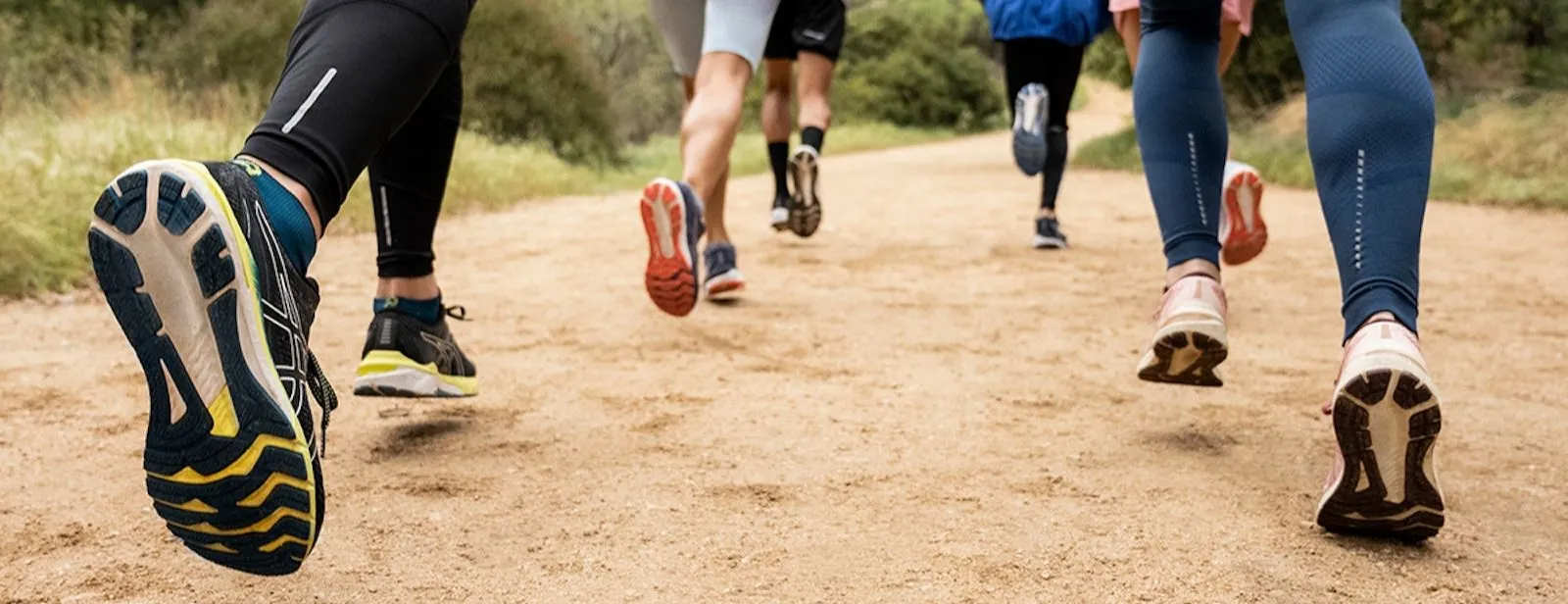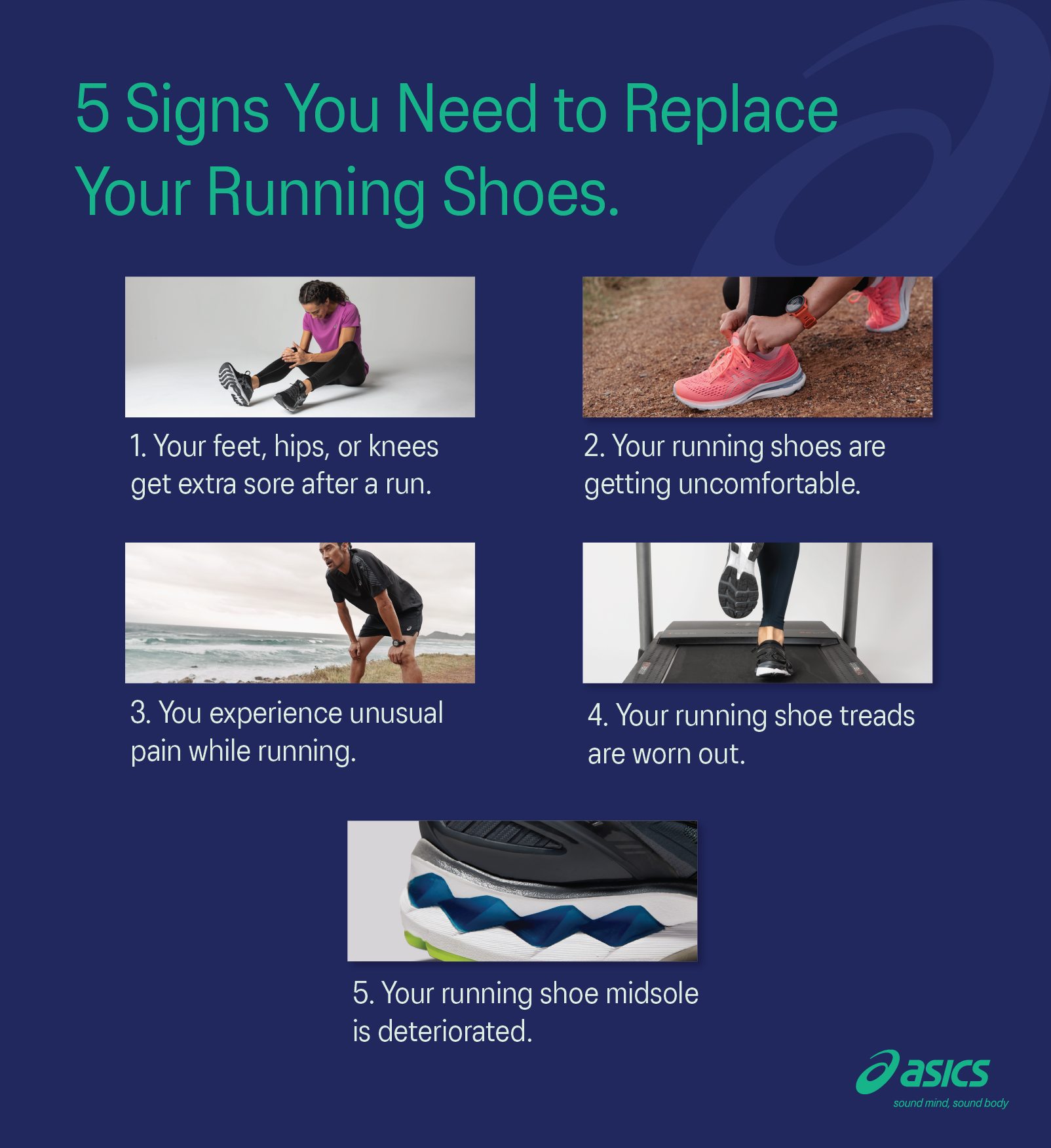
When to Replace your Running Shoes
January 27, 2022 / ASICS Australia
Waiting too long could lead to injury, so it’s important to look for the signs you need to replace your running shoes. Here, we’ll explain how long running shoes last, what factors play a role in your footwear’s lifespan and the warning signs that signal it’s time for a fresh pair.
How long do running shoes last?
Generally speaking, a shoe’s lifespan will vary based on the weight of the runner, where and how frequently they run. Shoe wear also depends on the material and construction of the shoe and consumers should seek advice on the expected durability at the point of purchase.
Factors that influence your running shoes’ lifespan
When you take your new ASICS running shoes out of the box all pristine and clean, they are also at their peak of protectiveness. A protective and supportive shoe will help to lessen any risk of injury. However, similar to any product used regularly, they will wear out eventually. How quickly this happens is determined by your kilometres, body weight, foot type and other factors.
Shoe construction
How many kilometres a running shoe will last is mostly to do with the way they were constructed and built. What the shoe is made of can change how long the shoe will last. Some runners will replace their shoes in a certain time period or distance to ensure the support materials are still effective.
Type of run and terrain
The type of running you do can determine how often you should replace your running shoes. Whether you race or run long distance, on trails or a treadmill, you need to take note of how the different terrains affect the condition of your shoes. For example, a long-distance pavement runner is more likely to need to replace their shoes sooner than an avid treadmill runner.
Your weight, height and overall build
A huge factor to running shoes lifespan can be your weight and height. The taller and heavier you are, the more impact you can make on the shoes, wearing them down quicker.
Your running technique or style
Awareness of your running technique and style is essential to avoiding injury. It’s important to take note of your pronation type. Knowing your pronation type will go hand in hand with your running technique. Your pronation style can affect how many kilometres your running shoes last. A heavy overpronator who runs daily will wear their shoes out faster than, say, a lighter, neutral runner running the same frequency. You can have your running style examined in select ASICS stores or read our guide on How to Choose the Right Running Shoe for You
5 signs you need to replace your running shoes
Unsure how to tell if your running shoes are worn out? There are many ways to determine whether your running shoes need replacing. Time or distance used are typical measuring sticks, but not the only ones. Some runners base their decision on the shape or feeling of the shoe rather than the length of time they’ve had them. Here are some common signs that you need new running shoes:

1. Your feet, hips or knees get extra sore after a run.
Many runners say they feel a difference in the support and foot landing. Many will have sudden arch pain or even a shift in the typical aches and pains after a run. It’s important to take note of how you typically feel after a run so you can spot a change.
2. Your running shoes are getting uncomfortable.
Noticing that your shoe is hurting your foot or simply becoming uncomfortable while you’re running could be a sign that it’s time for a new pair of shoes. Having this knowledge ahead of time can save a lot of time and pain than just remaining in the same worn-down shoe.
3. You experience unusual pain while running.
If you experience unusual pain during a run, it could have something to do with the wear and tear of your shoes. This is important to recognise rather than ignore. It could be as simple to fix as buying a new pair of running shoes.
4. Your running shoe treads are worn out.
If your shoes become unable to grip surfaces, your shoe treads are likely worn out. Another great way to check this is if you can visibly see a change in the shoes appearance.
5. Your running shoe midsole is deteriorated.
The midsole feels too soft and collapses easily under pressure. You may see longitudinal creases in the midsole. Many runners say that they can tell the midsole of the shoe is deteriorating when the foam on the shoe is less springy, or when the rubber is worn. If you identify one or more of these factors visit an ASICS specialty running store . If you bring your old running shoes, an expert can take a look at them and help to fit you for a new shoe.
Why is it important to know when to replace your running shoes?
Replacing your running shoes before they’re worn out is important for injury prevention. Wearing shoes that are worn out may injure your feet, legs, pelvis and a number of muscles. Many runners work on a time basis or a distance usage basis. This is to keep an exact log of when to replace your running shoes and get a new pair. Don’t wait for your running shoes to be worn out—plan ahead and replace your running shoes on a schedule.
Take the step to replace your running shoes today: